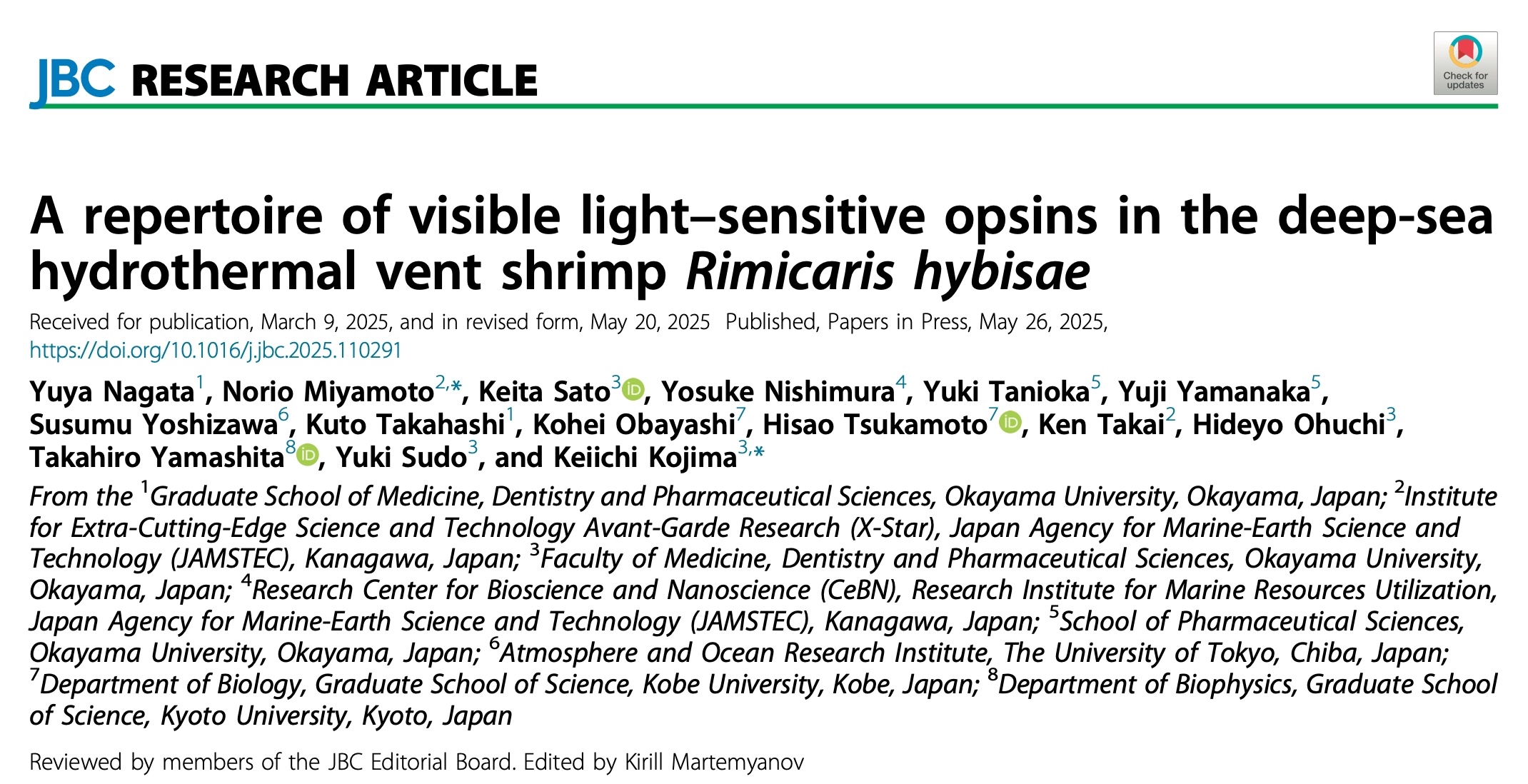NEWS
Unveiling the Secret of Light Perception in Deep-Sea Shrimps — Discovery of a Novel Opsin Sensitive to Visible Light

Around deep-sea hydrothermal vents where sunlight does not reach, faint visible light (from blue to red) exists due to biological luminescence and blackbody radiation from high-temperature fluids. The deep-sea shrimp Rimicaris hybisae, which inhabits this dark environment, has a unique dorsal eye located on its back that is believed to detect this dim light. However, the molecular mechanisms behind this ability had long remained unclear.
In this study, we conducted transcriptome analyses of the eyes and brain of R. hybisae and identified six opsin genes. These included three Gq-coupled opsins that are typically associated with visual function, as well as Opn3, Opn5, and peropsin, which are generally considered to be involved in non-visual light sensing. All of these opsins were found to respond to visible light and function to convert light signals into intracellular information.
Of particular interest is that Opn5, which is usually thought to respond to ultraviolet light, had evolved in R. hybisae to respond to blue light. This visible-light sensitivity was made possible by a unique feature: the counterion that stabilizes the internal Schiff base was located at the Asp83 position, unlike in other opsins.
Furthermore, similar “visible light-type Opn5” variants were found in other shallow-water crustaceans, suggesting that this mechanism may be common across crustaceans and not limited to the deep sea. This study elucidates the evolutionary background of the ability to “see and sense light” in organisms adapted to the extreme environment of the deep sea and offers new insights into visual biology and the potential applications of light-responsive proteins.
https://www.sciencedirect.com/science/article/pii/S0021925825021416?via%3Dihub